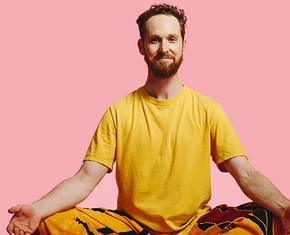The views expressed in our content reflect individual perspectives and do not represent the authoritative views of the Baha'i Faith.
I have a friend who, if you met her, you would probably perceive as a white woman. She has light skin, hazel eyes, straight, light brown hair and describes herself as having “typically Caucasian features.”
But she’s black.
Born in Africa of two dark-skinned African parents, she’s nowhere near as chocolate-colored as her siblings. They look African, but for some reason she doesn’t. “I’m coffee, but with lots of cream,” she tells people. Because of this big difference in skin color, at one point in her younger life, she began to suspect that her parents weren’t telling her everything about her heritage—so she constructed a detailed family tree by talking to all the relatives she could find. She learned about a grandmother she’d never met, one who died early in her marriage to my friend’s maternal grandfather. She searched for a photo. When she found the picture, she told me, she had an epiphany—because she immediately realized she looked exactly like that long-lost grandmother.
You may have had a similar experience in your family. “You look just like your great-uncle!” my grandmother told me once. Genetics are powerful, and all of us inherit certain traits, whether dominant or recessive, then pass them down to our progeny. Everyone in my family—mother, father, four siblings—all had dark hair. I was born blonde. My brothers and sisters used to joke that I was adopted. But sure enough, that great-uncle my grandmother told me I resembled had blonde hair, too.
Science has learned a huge amount about genetics and how they work in the past few decades. Here’s one remarkable finding from a recent study:
David Reich, a geneticist at Harvard Medical School, and his colleagues assembled a database of genomes from all six inhabited continents. The Simons Genome Diversity Project, sponsored by the Simons Foundation and the National Science Foundation, contains 300 high-quality genomes from 142 populations.
Dr. Reich and his colleagues probed their data for the oldest evidence of human groups genetically separating from one another.
They found that the ancestors of the KhoiSan, hunter-gatherers living today in southern Africa, began to split off from other living humans about 200,000 years ago and were fully isolated by 100,000 years ago. – A Single Migration from Africa Populated the World, Studies Find, Carl Zimmer, September 21, 2016, The New York Times.
What does this tell us? It indicates at least two fascinating facts: 1. Everyone shares a single set of ancestors, despite the fact that we may look very different from each other; and 2. Our DNA reveals that race has no scientific basis at all. Instead, it may just indicate when our ancestors stopped marrying outside their tribe.
Just like my friend, the way we look may not have anything to do with where we came from, either parentally or geographically. Why? Because all populations, all around the world, have now mixed with all other populations. The KhoiSan tribe, for example, may have retained their genetic uniqueness for a hundred thousand years, but today intermarriage and the breakdown of geographic and cultural barriers and the movement of tribal peoples into the world’s urban areas and a hundred other factors all point to one inescapable conclusion: the world no longer contains any genetically unmixed populations. We are all biracial, triracial, multiracial.
The Baha’i teachings say that the “artificial” skin color-based categories we’ve invented are only:
…purely imaginary racial differences; for humanity is one kind, one race and progeny inhabiting the same globe. In the creative plan there is no racial distinction and separation such as Frenchman, Englishman, American, German, Italian or Spaniard; all belong to one household. These boundaries and distinctions are human and artificial, not natural and original. All mankind are the fruits of one tree, flowers of the same garden, waves of one sea. – Abdu’l-Baha, Foundations of World Unity, p. 23.
Race is imaginary. Yes, we humans have a wide spectrum of skin color, all the way from very dark to very light, but so what? We also have a wide spectrum of nose shapes and eye colors and shoe sizes—but we don’t base anything meaningful or important on those minor variations.
In the same way, Abdu’l-Baha said, we should see skin color as non-essential but beautiful in its variety:
In the realm of existence colors are of no importance. Observe in the mineral kingdom colors are not the cause of discord. In the vegetable kingdom the colors of multicolored flowers are not the cause of discord. Rather, colors are the cause of the adornment of the garden because a single color has no appeal; but when you observe many-colored flowers, there is charm and display.
The world of humanity, too, is like a garden, and humankind are like the many-colored flowers. Therefore, different colors constitute an adornment. In the same way, there are many colors in the realm of animals. Doves are of many colors; nevertheless, they live in utmost harmony. They never look at color; instead, they look at the species. How often white doves fly with black ones. In the same way, other birds and varicolored animals never look at color; they look at the species.
Now ponder this: Animals, despite the fact that they lack reason and understanding, do not make colors the cause of conflict. Why should man, who has reason, create conflict? This is wholly unworthy of him. Especially white and black are the descendants of the same Adam; they belong to one household. In origin they were one; they were the same color. Adam was of one color. Eve had one color. All humanity is descended from them. Therefore, in origin they are one. These colors developed later due to climates and regions; they have no significance whatsoever. – Abdu’l-Baha, The Promulgation of Universal Peace, p. 45.
Race, then, is socially constructed, and not biological. Ponder that fact for a while.
Next: How We Humans Got Our Colors
















Comments
Sign in or create an account
Continue with Googleor